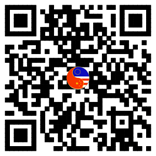|
|||||||||||||||||
How is cotton recycled?The recycling process is quite simple and requires no chemical substances.This process has been witnessed by SGS laboratory. The presence of the “GREEN CITY COTTON” label inside your product certifies the recycled origin of the used material. There are three different sources that feeds our recycled cotton network:
SORTING: collected clothing is sorted by colour, manually (and patiently), there is no chemical treatment, all red clothes will be converted into red threads, etc. SHREDDING: the collected clothing/fabric are shredded to make non-woven fibres. The process is purely mechanical; the pieces of cloth come into a kind of drum-chopper and come out as "Candy floss" whose visual appearance is very close to raw cotton after harvest. Because these fibres were chopped, some are shorter than the new cotton fibres, what justifies the addition of longer recycled PET fibres to increase the resistance of the threads. The fibres are put together in big cotton bales. KNITTING or WEAVING: the bales of recycled cotton (90%) are put together with similar bales of recycled PET fibres (10%) in the opening room, apart of this only difference, the weaving or knitting process is 100% identical to the knitting/weaving process of new cotton:
|
|
||||||||||||||||
| Copyright 2009 © Living bag, All rights reserved. 1511, Block B Tian Yi Hao Jing, No.21 Hua Lou Xiang, Ningbo, Zhejiang, China - Tel: +86 574 8768 6296 - Fax: +86 574 8768 6297 |














